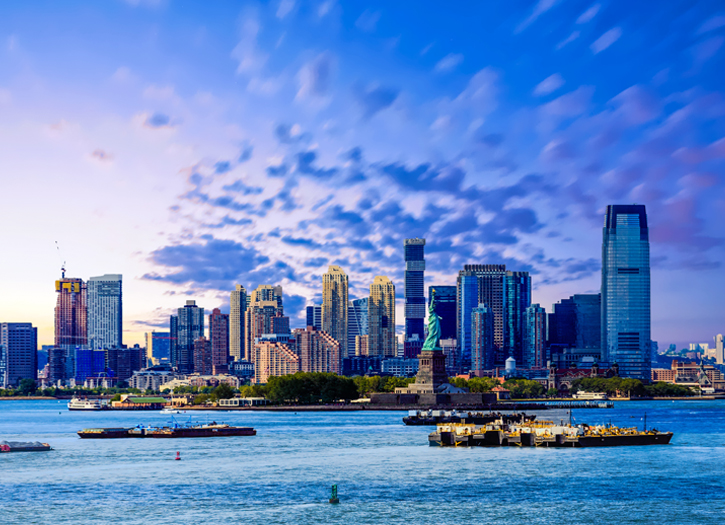The COVID-19 pandemic reached the U.S. state of New Jersey with the first confirmed case arriving in Bergen County on March 2, 2020 and testing positive on March 4. As of September 21, 2020, 200,154 cases were confirmed in the state, incurring 14,278 deaths.
On March 9, Governor Phil Murphy declared a state of emergency. A day later, schools and universities began closing and switching classes to online instruction. Also on March 10, the first person in the state died from the disease.A statewide curfew began on March 16, and all casinos, gyms, and movie theaters were closed; restaurants and bars were only allowed to remain open for delivery and takeout.As of September 26, 2020, New Jersey has the ninth-highest number of confirmed cases in the United States.
On March 14, Governor Murphy announced on Twitter an additional 19 confirmed cases of COVID-19, bringing the cumulative total of confirmed cases to 69.[14] A second death was reported on March 14 in Monmouth County: 56-year-old Rita Fusco-Jackson of Freehold died of the virus the prior evening after being treated at CentraState Medical Center.On March 15, Governor Murphy announced via Twitter that another 31 cases had been confirmed in the state, bringing the cumulative total to 98 positive cases.On March 16, New Jersey officials reported 80 new positive cases of the coronavirus, bringing the cumulative total to 178 for the state, with three deaths. On September 21, the total number of COVID-19 cases reported in the state reached 200,000.
On March 9, Governor Murphy declared a state of emergency in New Jersey as the number of cases grew to 11. On March 14, the mayor of Hoboken declared a mandatory nightly curfew.On March 15, Governor Murphy announced via Twitter that another 31 cases had been confirmed in the state, bringing the cumulative total to 98 positive cases. He also stated on a New York City radio station that he was considering a statewide curfew.
On March 17, Governor Murphy said that as of 8 p.m., all of the state’s amusement centers, amusement parks, and shopping malls would be closed indefinitely. “This is a virus unlike everything we’ve ever seen in our lifetime,” Murphy said. According to MarilouHalvorsen, the president and CEO of the New Jersey Restaurant and Hospitality Association, 90% of restaurant employees were laid off on the 16th. There were 15,000 unemployment applications filed on the 16th, and the increase caused the computer system at the state Department of Labor to crash.
On March 19, Murphy ordered all personal care businesses that could not maintain proper social distancing to close by 8 p.m. on the 19th; these businesses included barbershops, hair salons, nail salons, spas, and tattoo parlors. A day later, Governor Murphy announced the closure of all non-essential businesses. Unemployment claims in New Jersey increased 20% for the week ending March 14 compared to the same period the previous year.On March 26, Governor Murphy said that 155,000 people filed for unemployment benefits in New Jersey during the previous week, 16 times the number that filed the week before.
The economy was affected negatively by the coronavirus, and the state prepared for a drop in tax revenue by putting $900 million into reserve in late March.State lawmakers moved New Jersey’s income tax deadline from April 15 to July 15 and moved New Jersey’s budget deadline from June 30 to September 30. According to the lawmakers, “The ongoing COVID-19 pandemic has caused hardships, financial strain, and disruptions for many New Jerseyans and New Jersey businesses.”
The statewide restrictions put into place due to the coronavirus caused many business closings and layoffs. According to the state Department of Labor and Workforce Development, nearly 577,000 New Jersey workers filed for unemployment benefits over the previous three weeks.By April 23, or five weeks since aggressive social distancing began, more than 858,000 New Jersey workers had filed for unemployment benefits. By April 30, 930,000 residents had filed for unemployment benefits in the previous six weeks, up from 55,000 for the same time period in 2019.







Add Comment